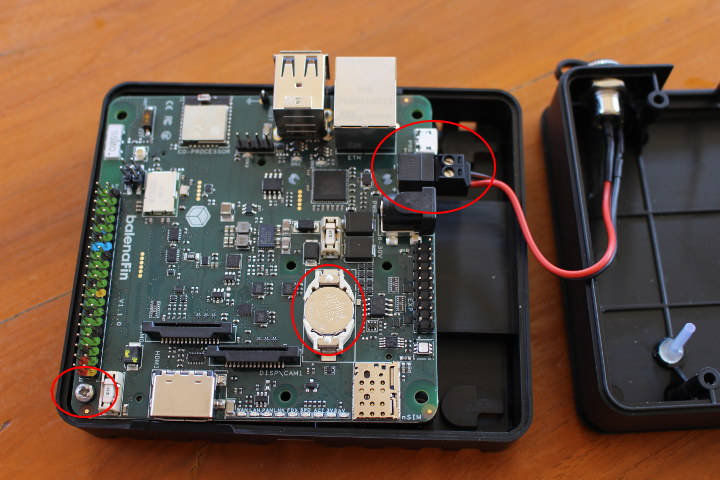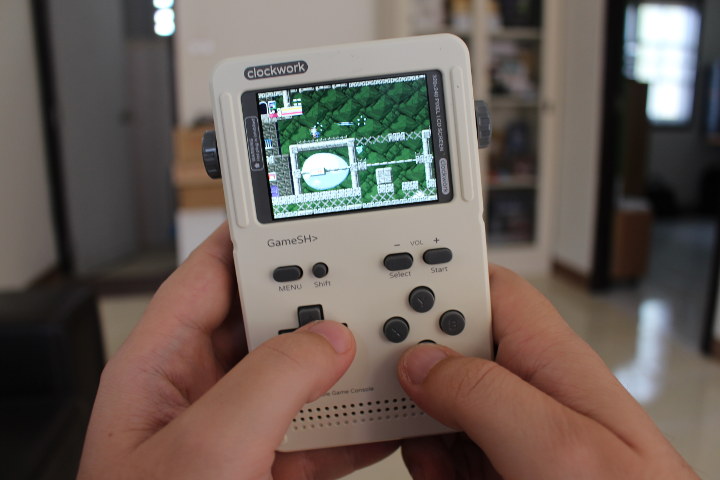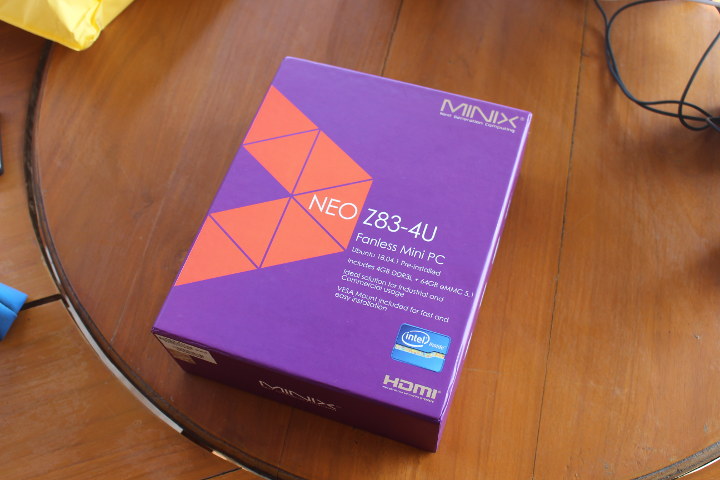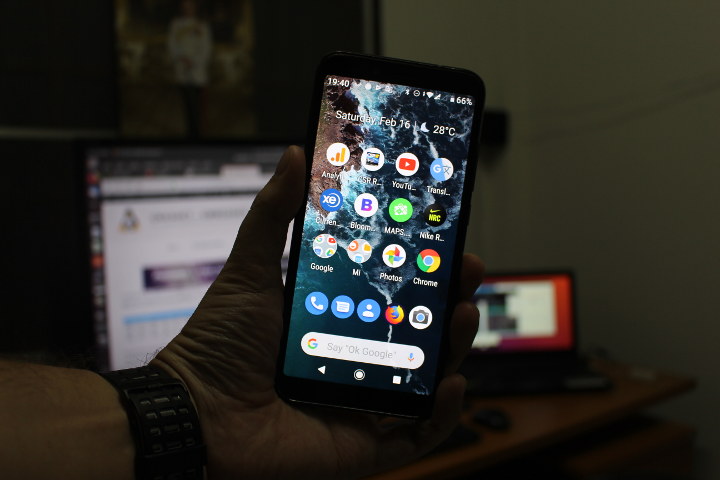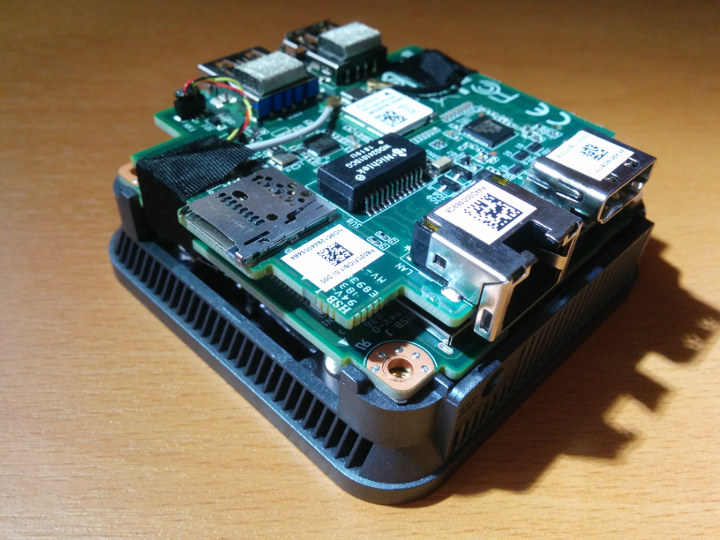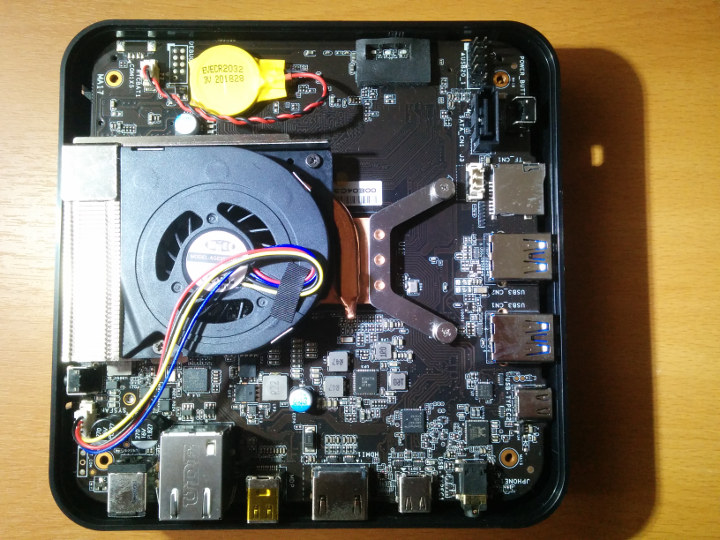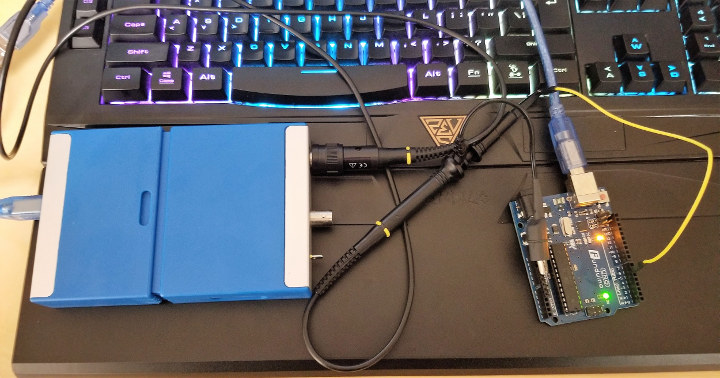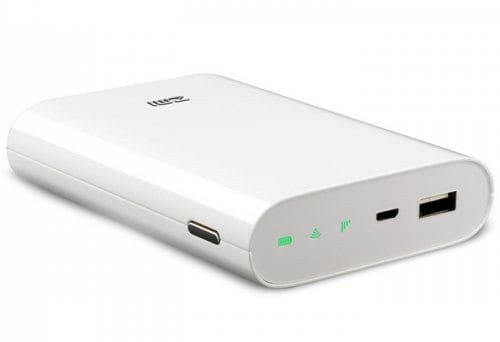Balena launched balenaFin 1.1 at the end of last month. The board is a professional carrier board for Raspberry Pi Compute Module 3 / 3+ Lite that includes support for variable voltage power input, optional PoE, industrial eMMC flash storage, a real-time Arm Cortex-M4 core via Artik-020 module, and more. Somehow a balenaFin 1.1 developer kit ended up in my home, and I’ll play with it in several weeks, but in the first part of the review, I’ll just check out the content of the package, and show how to assemble the kit. BalenaFin 1.1 Developer Kit Unboxing The local courier brought a largish balena Fin package. which contained a smaller balenaFin package, and the actual developer kit. Everything is nicely packaged in the box with the part related to power supply in a white box, a small opening for smaller accessories and Raspberry Pi Compute Module 3, as well […]
GameShell Kit Review – Part 2: An Hackable Retro Gaming Console
ClockworkPi GameShell is an hackable retro gaming console combining Arm Linux and Arduino boards that happens to come in kit form, and that’s lot of fun to assemble as we’ve seen in the first part of the review of ClockworkPi GameShell. Since then I’ve had time to have more fun, play some games, and experiment with the device, so I’ll report my experience and point out the good parts, as well as some of the shortcomings I came across. We can press the power button to start it up, and after a few seconds we get to the main menu with several icons including… the self-describing Settings, Retro Games with MAME, MGBA, NESTOPIA, and PCxs emulators that require your own ROMs/BIOS, as well as Indie Games with ready to play games like OpenTyrian spaceship shooting game, or NyanCat. Moving on to the right of the menu we’ve got the famous […]
MINIX NEO Z83-4U Review – Part 1: Unboxing and Teardown
MINIX NEO Z83-4U Ubuntu mini PC was unveiled just a few days ago as the first mini PC from MINIX HK running a Linux operating systems, namely Ubuntu 18.04. The company has sent me a sample for evaluation, so as usual, I’ll first have a look at the hardware in the first part of the review, before reporting my experience with the mini PC in a few weeks. MINIX NEO Z83-4U Unboxing The company has done away with the black and green package for their Android TV boxes and Windows mini PC, and instead went with a purple and (Ubuntu) orange package. I already wrote the specifications in the announcement post, but here they are again on the back of the package. The main difference, in terms of terms, against MINIX NEO Z83-4 Pro (Windows 10 Pro) mini PC is that the storage has been upgraded to 64GB flash since […]
Xiaomi Mi A2 Review with Android 9.0 Pie
I had been using Xiaomi Mi A1 Android One smartphone since the end of 2017, and was mostly satisfied with it thanks to regular (monthly) firmware update, although I was a bit disappointed by the camera overtime. Eventually I had a serious issue with Mi A1’s eMMC flash, and stopped using it at the end of last year, or roughly after one year of service, since the phone became unusable, unbearably slow. Xiaomi Mi A2 and A2 Lite where released last summer, and having seen Mi A2 was getting an Android 9.0 firmware in Q4 2018, I asked GearBest whether they could send a sample to review the latest Xiaomi Android One phone. They accepted, and I posted the first part of the review in early December. However, at this time, I did not get the update, since it was not released in Thailand, but soon enough Xiaomi Mi A2 […]
LIVA Q2 Review – ECS Micro PC Tested with Windows 10 and Ubuntu 18.10
ECS (Elitegroup Computer Systems) is a Taiwanese company that has been offering mini PCs for several years now. Last year they announced their ‘pocket-sized’ model the LIVA Q. Originally featuring Apollo Lake SoCs it has now been upgraded and renamed as the LIVA Q2 and offers a choice of Gemini Lake SoCs. The distinguishing feature of the LIVA Q series however is the form-factor. Compared with Intel Compute ‘stick’ PCs and Intel NUC ‘mini’ PCs the LIVA Q2 is a ‘micro’ PC. This micro PC is like a minimalist mini PC that includes just the minimum number of useful ports namely a couple of USB ports (3.1 and 2.0) on one side, a micro SD card slot on another and finally an HDMI (2.0) and gigabit Ethernet at the rear. The resultant micro PC is beautifully small consisting of a 70mm (2.76″) square case by 33.4mm (1.31”) tall which can […]
Pepper Jobs GLK-UC2X Mini PC Review with Windows 10 and Ubuntu 18.10
Pepper Jobs is a new company led by Ken Wong who was formerly MINIX’s product director and defined many innovative products such as NEO-X series Android media hubs and NEO-Z series Intel-based mini PCs. The first Pepper Jobs designed and released mini PC is the GLK-UC2X targeting small business, 4K home theater, and living room use with an emphasis on low power and great savings on electricity bills. The GLK-UC2X contains an Intel Celeron N4100 Processor Gemini Lake SOC which is a quad-core processor bursting up to 2.40 GHz together with the Intel UHD Graphics 600 processor that is capable of 4K support at 60Hz. It physically consists of an approximately 139mm (5.5″) square case about 33mm (1.3”) tall with a side panel that includes the power button, a couple of USB ports, a Type C USB port and a micro SD card slot with the rest of the ports […]
SainSmart DS802 Review – A Dual Channel Virtual PC Oscilloscope
Hey Karl here. Today we’re going to look at the SainSmart DS802 Dual-channel oscilloscope. I have always wanted to have an oscilloscope and add it to my tools. When SainSmart asked to review the DS802, I was pretty excited. I can get my nerd on and troubleshoot all kinds of things. A couple weeks later it arrives and my anxiety kicks in. How the heck do I review an oscilloscope. I used an oscilloscope in high school in a class called principles of technology. But we never really went into much depth and only looked at the signals generated by a signal generator. I understand the basics. This is written from a perspective of a complete noob. SainSmart DS802 Specs Pulled directly from Sainsmarts website: Channels: 2 Analog channels Interface: USB 2.0 Output: 1k HZ amplitude 1.5V, 50% duty cycle square wave signal Maximum sampling rate: 80 MSps per channel […]
$54 ZMI MF855 is Both a Power Bank and a Portable 4G Wireless Router
Tiny routers usually come with at least one USB port that allows you to connect a 3G or 4G cellular dongle, and since it’s often used on the go, or as a backup solution it makes sense to have a battery in the router as well, as was the case for Marstek MPR-N9 I covered way back in 2013. Xiaomi ZMI MF855 portable wireless router offers the same function but with an integrated 4G modem, a larger 7,800 mAh battery that can also be used to charge your other device. The router looks like a standard power bank from the outside. ZMI MF855 router key features: Cellular Connectivity 4G/3G and 2G networks Micro SIM card socket FDD-LTE bands – B1 1800 B3 2100 B7 2600 MHz TDD-LTE bands – B38 1900 B39 2300 B40 2500 B41 2600MHz WCDMA bands – B1 850 B2 900 B5 1900 B8 2100 MHz WiFi […]


